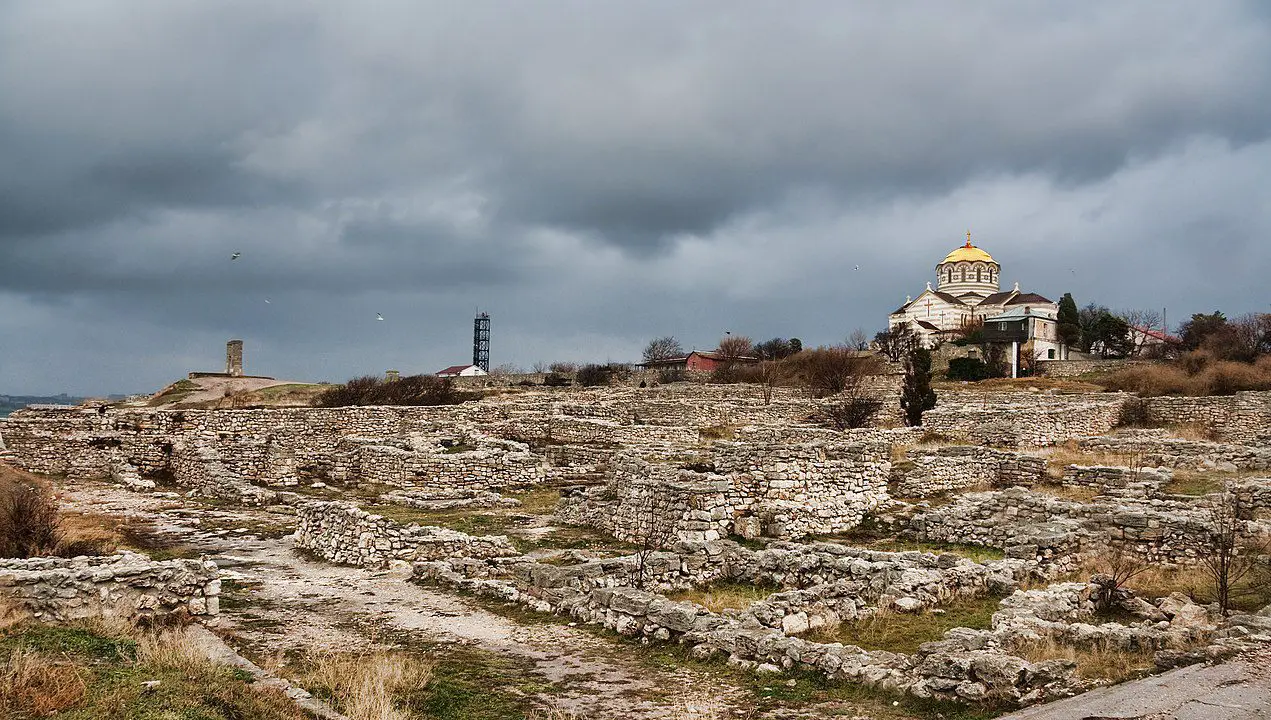A team of archaeologists have uncovered a fragment belonging to a 4-metre-tall statue during excavations on the western side of St. Vladimir’s Cathedral in Chersonesos.
Chersonesos was founded as an ancient Greek colony by settlers from Heraclea Pontica during the 6th century BC on the outskirts of present-day Sevastopol in the Crimean Peninsula.
From the 1st century BC, the city was absorbed into the expanding Roman Republic, emerging as an important trading centre on the Black Sea.
The Byzantine Empire used Chersonesos for its strategic location to monitor the movements of barbarian tribes, and as a place of exile for notable figures such as Pope Clement I, Pope Martin I, and the deposed Byzantine Emperor Justinian II.

In a statement announced by the State Historical and Archaeological Museum-Reserve Tauric Chersonese in Sevastopol, archaeologists excavating on the south of the western entrance to the St. Vladimir’s Cathedral have uncovered a fragment of a marble sculpture that dates from the Roman period.
The fragment is part of a foot from a large statue, which the researchers suggest would have been around 4 metres in height and likely depicted a Roman emperor yet to be identified.
Daniil Kostromichev, said: “Presumably, this is a leg shod in a sandal made of leather belts. Usually such sandals are typical for the Roman army, but a figure of such a scale is most likely a statue of a Roman emperor from about the first centuries of our era.”
Excavations also revealed structures and burials that date from the medieval period around the 9th century AD, which the archaeologists hope will give new information to a little-known Christian church, which according to legend, was in the vicinity of where the baptism of Vladimir the Great took place in AD 988.
Header Image Credit : State Historical and Archaeological Museum-Reserve Tauric Chersonese





